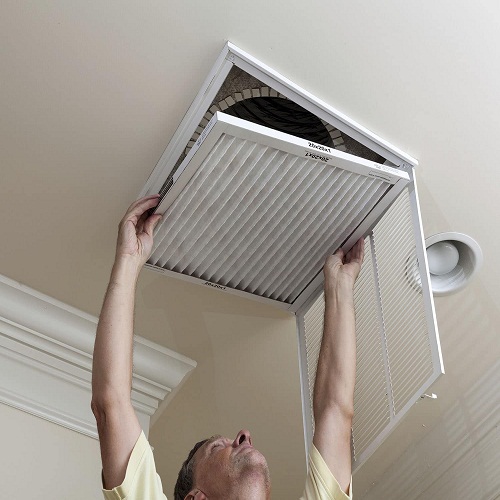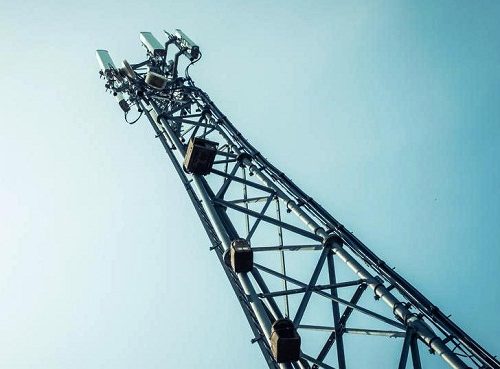As offices and businesses reopen after being shut down for the coronavirus pandemic, it’s incumbent upon owners and operators to upgrade heating, ventilating, and air conditioning (HVAC) systems to minimize virus transmission. There are certainly plenty of articles and whitepapers providing advice regarding how to do so. Most of these sources are based on lists and press releases prepared by the American Society of Heating, Air Conditioning, and Refrigerating Engineers (ASHRAE) Epidemic Task Force.
Two key techniques that stand out from this tsunami of advice are to: 1) upgrade filters to remove more of the tiny airborne particles that can carry viruses (known as bioaerosols), and 2) increase the amount of outdoor air that ventilation systems bring in and distribute throughout buildings. Both of these techniques can get the job done, but they’re also fraught with complications to implement well. Each must be carefully analyzed to avoid diminishing system performance or wasting money. Furthermore, these two techniques are mutually exclusive. Do one well, and the other is either unnecessary or wasteful.
Of these two ways to protect building occupants, which is more effective, filtration or ventilation? While more research needs to be done, the best research available suggests that both techniques are about equally effective at minimizing disease transmission, but filtration is much less expensive and energy intensive. That makes filtration the best choice for most buildings.
Upgrading filters requires care
All HVAC systems with air distribution pass their return airstreams through filters, which, at a minimum, are robust enough to protect fan blades from getting blanketed with dust. Better filters are capable of removing pollen, pet dander, smoke, and a variety of human pathogens from the airstream. The cheapest, least effective filters are made from fiberglass. Better filters incorporate polyester or cotton fibers, as well as fibers capable of building up a static electric charge that attracts particles.
The filtration industry expresses the effectiveness of its products using the Minimum Efficiency Reporting Value (MERV) scale, which ranges from 1 to 20. The higher the MERV rating, the more effective a filter is at removing a wide range of particles from an airstream. Most filters found in commercial building HVAC systems feature MERV ratings from 6-8. The ASHRAE Epidemic Task Force recommends that these filters be upgraded to MERV 13, or higher, which filter out over 85% of the bioaerosol particles that contain viruses, including coronaviruses. That’s about twice as effective as typically used filters.
Although in some cases building maintenance staff need merely remove an existing filter and replace it with a MERV 13 filter, it’s usually not that simple. Some, but not all, MERV 13 filters are more resistive to airflow than lower-rated filters. Installing more resistant filters could either slow down airflow, or increase fan energy consumption, depending on the kind of motor driving the fan. Given how critical it is to protect occupant health and safety during the pandemic, and afterwards, a little more energy consumption can probably be justified. Less airflow, however, cannot. These problems associated with filter resistivity can largely be overcome by careful planning and analysis done by professionals familiar with HVAC system design. For example, there are a variety of tricks engineers can employ to upgrade filters to MERV 13 without reducing airflow, such as using thicker filters (yes, the thicker filters are less resistive) or moving them from central locations to return air grilles.
Installing MERV 13 filters also poses additional challenges for maintenance staff. MERV 13 filters are more expensive than their lower-rated counterparts. They need to be handled more carefully than conventional filters, and they need to be carefully sealed between the filter edge and the metal frame in which they’re held. Air that leaks between the filter and the frame can’t be cleaned of viruses and other particles. Lastly, the higher-rated filters may need to be replaced more frequently. These challenges can be overcome by training maintenance staff how to handle and install these filters, and finding the money to purchase them.
There’s one problem, though, that I’m not sure how to solve or how serious it is. We’re currently experiencing a MERV 13 filter shortage. Many suppliers report their stocks are low, or out completely, and manufacturers are running double shifts at their factories. If it’s anything like the great toilet paper shortage of 2020, this could go on for a while.
Let’s clear the air on ventilation
There’s a good reason why being outdoors presents a lower risk of contracting COVID than being indoors. Outdoors there’s plenty of fresh air to dilute and disperse bioaerosols. Virtually all sources advise upgrading HVAC systems to bring in more outdoor air, in an effort to make the indoors more like the outdoors. The Centers for Disease Control and Prevention recommend increasing the percentage of outdoor air delivered by HVAC systems up to 100%. That means that all of the air moved by the HVAC system would consist of air drawn from outdoors. Again, this is sound advice in theory and problematic in practice.
For one thing, it’s rare that buildings have sufficient heating and cooling capacity to actually deliver 100% outdoor air and still maintain comfortable conditions. For those building operators who seek to bring in as much outside air as their systems can manage and still maintain acceptable temperature and humidity conditions, it’s hard for them to know how much air that actually is, and how to set their systems up to do it. A bigger problem is that bringing in additional outside air can result in huge increases in energy consumption. It takes a lot of energy to cool all that outdoor air in the summer and warm it up in the winter. A recent study by scientists from the National Renewable Energy Laboratory concluded that operating HVAC systems at very high outdoor air levels could result in increasing the energy consumption of those systems by 2 to 5 times. Of course, if that much energy consumption is absolutely necessary to protect human health, then it may well be justified. If the same level of protection can be provided with far less energy consumption (like, for example using filtration), then we’ve got to question the advisability of bringing in so much outdoor air.
Filtration is the way to go
Suppose you had a cold house. On the coldest outside days, your furnace just didn’t have enough oomph to keep your house warm. You might solve this problem in two ways: you could install more insulation or you could get a bigger furnace. It wouldn’t make sense to do both. If you installed more insulation, you wouldn’t need a bigger furnace. If you replaced your furnace, you wouldn’t need the insulation. So it is, with choosing between filtration and ventilation. If you decide to go with one, the other would be a waste of money.
Here’s why. Most HVAC systems move air using a technique known as recirculation. They draw air from conditioned space via the return air system. They mix that return air with outdoor air, condition the mixed air, and drive it back into the conditioned space. The more outside air that’s brought in, the less return air that’s recirculated to and from the conditioned space. In the extreme example, of a system that distributes 100% outdoor air, there is no recirculated air at all. But, in the words of Dr. Bill Bahnfleth, the Chair of the ASHRAE Epidemic Task Force, “The only way for filters in a recirculating air conditioning system to remove particles of indoor origin is if there is…recirculation.” In other words, if you boost your outdoor air flow, you’ll have less recirculated room air flowing through your filters. Get the outside air fraction high enough, and there’s not much left for those expensive MERV 13 filters to do. If better filters can reduce virus transmission all on their own, you don’t need to spend lots of money conditioning additional outdoor air.
Given that we have to choose between filtration and ventilation, Dr. Bahnfleth finds one piece of research to be especially valuable for informing that choice. This work was done in 2013 by researchers from the Illinois Institute of Technology (Illinois Tech). They were looking for the most effective way to prevent the influenza virus from spreading in an office building, but their findings are probably just as applicable to coronaviruses as well. The Illinois Tech researchers took a highly regarded model for predicting the risk of infectious airborne disease transmission and modified it to include virus removal by air filters. They then linked up that model to the performance characteristics of MERV rated air filters, as well as an HVAC energy consumption and operating cost model.
They found that both filters and increased outdoor air could achieve similar levels of reduced infection risk, but that filters were far cheaper to apply than increased outdoor air. In other words, they determined that upgrading filters made more sense than increasing outdoor air flows. Indeed, they found MERV 13 filters presented a sweet spot. Higher MERV rated filters did have the potential to reduce disease transmission risk, but only slightly, and at much higher cost. In their models, it was the cost of heating and cooling that additional outdoor air that led to the far higher costs associated with increased ventilation. For more details on the Illinois Tech researchers’ findings, see the figure below.
Filtration achieves similar risk reduction as ventilation but at much lower cost

This chart illustrates the findings of the Illinois Tech research team. The vertical axis represents the mean relative risk of infection. The lower a given point is on this axis, the less likely it is that building occupants will contract the virus. The horizontal axis represents the annual cost of operating the HVAC system, including the energy costs of running the fan, as well as heating and cooling both indoor and outdoor air. The “L” shaped black line on the left represents the filtration case and is marked with MERV ratings. As the MERV ratings increase, the likelihood of infection goes down. From MERV 4 to MERV 13, increasing MERV rating is strongly correlated with reduced infection risk, with little increased cost. For MERV ratings higher than 13, risk goes down only slightly, but costs go up rapidly, which is why the authors selected this rating as the best choice. The multicolored lines that swoop down from the upper left hand corner represent the ventilation case in four different US cities. That downward swoop is caused by increased outdoor air leading to reduced risk, but also rapidly increased operating costs. The more intemperate the climate, the greater the cost. The only filter case for which increased outdoor air results in lower risk at the same or lower cost is for the MERV 4 filter. For all higher MERV ratings, which comprise the vast majority of HVAC systems in commercial buildings, it is much less costly to achieve the same amount of risk reduction upgrading filters rather than increasing outdoor air.
The Illinois Tech researchers noted that much more work is left to be done in this area, including more analysis of bioaerosol particle sizes and distributions, applying more sophisticated statistical techniques and air conditioning system models, studying more building types and climates, and conducting field studies. However, their findings are so asymmetrical, it’s hard to imagine that future studies will come to dramatically different overall conclusions.
Getting it done
Building owners and operators retrofitting MERV 13 filters into systems designed for lower rated filters often need help. Someone’s got to figure out which are the right filters to use, and where in the system they should be installed. Those decisions can require calculations, measurements, or both. People who can help include engineers and contractors, but another excellent and often overlooked choice is a commissioning agent. These folks test HVAC systems to ensure they’re operating as intended. For existing systems, they can also analyze how to modify them to operate in new ways. Commissioning agents can not only identify degradation that occurred during the pandemic shutdown, but also recommend filter upgrades. Furthermore, they also verify control systems are functioning properly, and make recommendations to improve those systems to both improve comfort and reduce energy consumption. Maybe they’ll find enough energy savings to make up for the additional fan energy that may be consumed pushing air through more resistive filters. Lastly, after the filter upgrades are complete, they can check airflow rates to ensure they’re at the right levels, check filter frames to ensure that the right filters were installed, and their edges are properly sealed. According to Craig Sieben, the Director of Energy at AECOM, a company that provides both HVAC engineering and commissioning services, “We’re analyzing filter retrofits in dozens of buildings and getting ready for more.”
The next filter technology is on the way
Instead of filtering out merely 85% of virus laden bioaerosols, like MERV 13 filters do, wouldn’t it be nice to add an additional filter that could de-activate virtually all of the remaining viruses in the airstream. Such a filter, which would be valuable for high risk buildings, such as hospitals, nursing homes, and schools, is under development and expected to come on the market soon. Developed by a joint project between Medistar, a medical real estate company, and the Texas Center for Superconductivity, it’s made from nickel foam. The foam is porous, which enables air to flow through it, and electrically conductive, so it heats up when an electric current is passed through it. Coronaviruses are killed off at about 160°F, but the developers chose to heat the foam up to 400°F just to make sure. In tests, they found that 99.8% of the viruses that cause COVID-19 were eliminated in a single pass. Furthermore, the developers claim that little heat passes from the filter to the air, and that they expect it to increase cooling energy consumption by only 1% to 2%. Medistar plans to produce about 20,000 units either later this year or next. Because the Medistar developers expect their new filter to be effective on other pathogens besides viruses, including anthrax spores and legionella, they anticipate there will be a need for virus-killing filters long after the pandemic is over.
Source: energycentral










